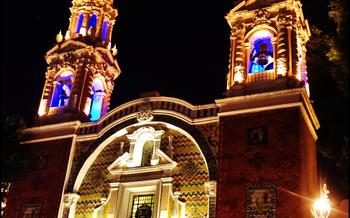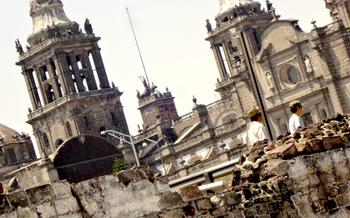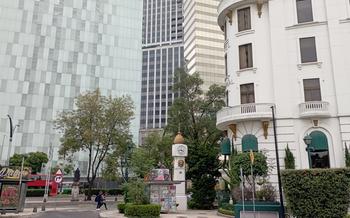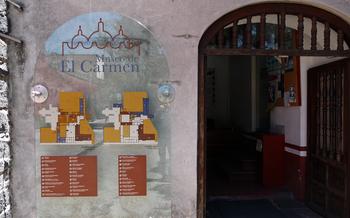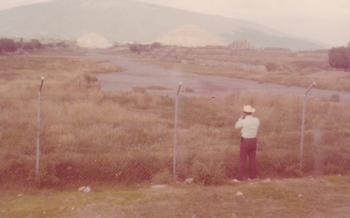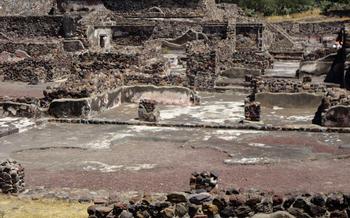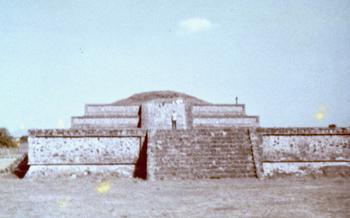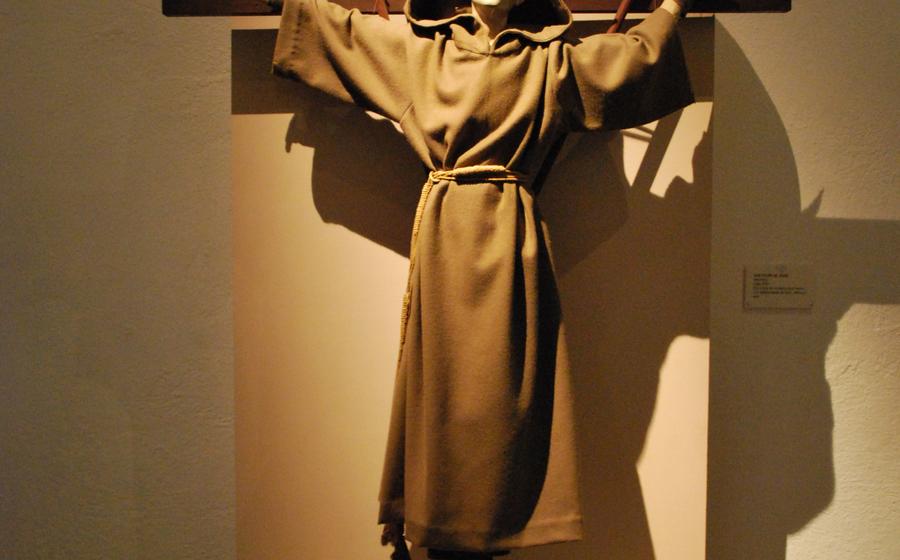
Museo Nacional del Virreinato
- The Museo Nacional del Virreinato: A Historical Overview
- The Hall of Paintings: Masterpieces Unveiled
- The Sculpture Gallery: A Testament to Craftsmanship
- The Historical Artifacts: Windows into the Past
- The Temporary Exhibitions: Exploring New Perspectives
- Guided Tours: Unlocking the Museum's Secrets
- Educational Programs: Engaging with History
- The Museum Store: Souvenirs and Treasures
- Accessibility: Ensuring Inclusivity for All
- Planning Your Visit: Practical Tips
- Transportation Options: Getting to the Museum
- Nearby Attractions: Exploring the Neighborhood
- Virtual Tours: Exploring from Afar
- Insider Tip: Hidden Gems and Secret Spots
The Museo Nacional del Virreinato: A Historical Overview
The Museo Nacional del Virreinato, nestled in the heart of Tepotzotlán, Mexico of San Francisco Javier, a magnificent architectural masterpiece dating back to the 16th century. The college, renowned for its educational excellence, played a pivotal role in the dissemination of knowledge and the formation of Mexico's intellectual elite.
The architectural style of the museum, a blend of Baroque and Churrigueresque elements, reflects the grandeur and opulence of the colonial period. The intricate facades, adorned with sculptures, reliefs, and decorative tiles, showcase the artistic prowess and craftsmanship of the era. The harmonious convergence of European and indigenous influences in the architecture epitomizes the cultural fusion that characterized Mexico during the colonial period.
The Museo Nacional del Virreinato holds immense significance in the cultural landscape of Mexico. It serves as a repository of invaluable artifacts, artworks, and historical documents that provide a glimpse into the social, political, and religious life of colonial Mexico. The museum's collection, meticulously curated and displayed, offers a comprehensive narrative of the country's past, making it a vital institution for preserving and promoting Mexico's cultural heritage.
The Hall of Paintings: Masterpieces Unveiled
The Museo Nacional del Virreinato houses an impressive collection of paintings that offer a glimpse into the artistic and cultural landscape of Mexico during the colonial period. Visitors can admire works by renowned artists such as Miguel Cabrera, José Juárez, and Cristóbal de Villalpando, whose masterpieces adorn the walls of the museum. These paintings showcase a diverse range of techniques, styles, and subjects, including religious iconography, historical scenes, and portraits.
One of the highlights of the collection is Cabrera's "The Virgin of Guadalupe," which depicts the iconic Mexican saint surrounded by angels and cherubs. This painting is a testament to the deep devotion to the Virgin Mary that permeated Mexican society during the colonial era. Another notable work is Juárez's "The Martyrdom of Saint Sebastian," which portrays the saint pierced by arrows, symbolizing his unwavering faith amidst persecution.
The religious art of the colonial period played a significant role in shaping the cultural identity of Mexico. Paintings served as didactic tools, conveying moral lessons and religious beliefs to a largely illiterate population. They also reflected the influence of European artistic traditions, particularly those of Spain and Italy. The Museo Nacional del Virreinato's collection of paintings offers a unique opportunity to explore the rich artistic heritage of Mexico and gain insights into the religious and cultural values of the colonial era.
The Sculpture Gallery: A Testament to Craftsmanship
The Museo Nacional del Virreinato's sculpture gallery is a testament to the extraordinary craftsmanship and artistic prowess of the colonial era. Here, visitors can marvel at a diverse collection of sculptures that encompass various materials, techniques, and styles.
One of the highlights of the gallery is the work of Manuel Tolsá, a renowned Spanish sculptor who left an indelible mark on Mexican art. His masterpiece, "El Caballito," depicts King Charles IV on horseback and is considered one of the most iconic sculptures in Mexico. The intricate details, harmonious proportions, and dynamic movement of the horse and rider are a testament to Tolsá's exceptional skill.
Another notable sculptor represented in the gallery is Miguel Jerónimo de Zendejas, whose works are characterized by their emotional intensity and dramatic gestures. His sculpture of the "Ecce Homo," which portrays Jesus Christ after his scourging, is a powerful and moving representation of suffering and sacrifice.
The gallery also features a collection of sculptures from anonymous artists, showcasing the diverse range of talent and creativity that existed during the colonial period. These works often depict religious subjects, such as saints and angels, and are characterized by their intricate carving and expressive details.
The materials used in the sculptures vary from wood and stone to bronze and polychrome, each contributing to the unique aesthetic and symbolic qualities of the artworks. The use of polychrome, or painting on sculptures, adds a vibrant and lifelike dimension to the figures, enhancing their emotional impact.
Whether it's the virtuosity of Tolsá, the emotive power of Zendejas, or the anonymous masterpieces that capture the essence of the era, the sculpture gallery at the Museo Nacional del Virreinato offers a captivating glimpse into the artistic achievements of colonial Mexico.
The Historical Artifacts: Windows into the Past
The Museo Nacional del Virreinato's collection of historical artifacts offers a glimpse into the daily lives of Mexico's colonial inhabitants. These objects, ranging from humble tools to ornate religious objects, provide a tangible connection to the past.
Among the everyday items on display are ceramic cookware, wooden furniture, and agricultural implements. These objects, often handcrafted with intricate designs, showcase the skills and ingenuity of colonial artisans. They also shed light on the daily routines and domestic life of the period.
Religious artifacts, such as elaborate silver chalices, intricately carved wooden crucifixes, and brightly painted ceramic figurines, hold a significant place in the museum's collection. These objects not only demonstrate the deep religious devotion that permeated colonial society but also highlight the artistic prowess of the craftsmen who created them.
The impact of European influence on Mexican culture is evident in many of the historical artifacts. Porcelain tableware, imported from China, sits alongside locally produced pottery, reflecting the global trade networks that existed during the colonial era. Elaborately embroidered textiles showcase the fusion of European and indigenous design motifs.
Through these historical artifacts, the Museo Nacional del Virreinato invites visitors to explore the complexities of daily life, religious beliefs, and cultural exchange in colonial Mexico. Each object tells a story, offering a glimpse into the past and providing a deeper understanding of this fascinating period in Mexican history.
The Temporary Exhibitions: Exploring New Perspectives
In addition to its permanent collection, the Museo Nacional del Virreinato frequently hosts temporary exhibitions that delve into specific themes and topics related to the colonial period. These exhibitions offer a fresh perspective on the museum's collection and provide a platform for collaboration with other institutions and artists. Visitors can expect to encounter a diverse range of artifacts, artworks, and multimedia installations that shed light on various aspects of Mexican history and culture.
Recent and upcoming exhibitions have explored themes such as the role of women in colonial society, the influence of indigenous traditions on Mexican art, and the impact of globalization on the region. These exhibitions often feature interactive and multimedia elements that engage visitors and encourage them to explore the material in new and innovative ways. Through these temporary exhibitions, the Museo Nacional del Virreinato remains at the forefront of historical research and interpretation, offering visitors a dynamic and ever-changing experience.
Guided Tours: Unlocking the Museum's Secrets
Guided tours at the Museo Nacional del Virreinato are an excellent way to delve deeper into the museum's rich history and collection. Knowledgeable guides lead visitors through the halls and galleries, sharing insights and anecdotes about the artworks, artifacts, and the colonial era in Mexico. These tours provide a comprehensive understanding of the museum's significance and offer a unique perspective on the lives and culture of the people during the viceregal period.
Visitors can choose from a variety of guided tours tailored to different interests and age groups. General tours provide an overview of the museum's highlights, while thematic tours focus on specific aspects of the collection, such as religious art, sculpture, or everyday life in colonial Mexico. The museum also offers specialized tours for children, families, and groups.
Reservations for guided tours are recommended, especially during peak seasons, to ensure availability. Tours are typically conducted in Spanish, but English-language tours are available upon request. Taking a guided tour is highly recommended for those seeking a deeper understanding and appreciation of the Museo Nacional del Virreinato's treasures.
Educational Programs: Engaging with History
The Museo Nacional del Virreinato offers a range of educational programs to engage visitors of all ages and interests with the museum's collection and the history of Mexico during the colonial period. These programs aim to make the museum a vibrant center of learning and discovery, fostering a deeper understanding and appreciation of Mexico's cultural heritage.
Workshops: The museum regularly hosts workshops that provide hands-on experiences related to the exhibits. Participants can learn traditional crafts, such as pottery or weaving, or engage in art projects inspired by the museum's collection. These workshops offer a unique opportunity to connect with the material culture of the past and gain a deeper appreciation for the skills and artistry of the colonial era.
Lectures and Courses: The museum organizes lectures and courses on various topics related to the colonial period. These sessions are led by renowned scholars, historians, and experts who provide insights into the political, social, and cultural dynamics that shaped Mexico during this era. Attendees can learn about the lives of key historical figures, the development of art and architecture, and the impact of the Spanish conquest on indigenous cultures.
Programs for Children and Families: The museum recognizes the importance of engaging younger visitors and families in its educational mission. It offers specialized programs tailored to their needs and interests. Interactive activities, storytelling sessions, and family-friendly workshops allow children to explore the museum's collection in a fun and engaging way, fostering a love for history and culture from a young age.
By participating in the educational programs offered by the Museo Nacional del Virreinato, visitors can gain a deeper understanding of the complex and fascinating history of Mexico, while also experiencing the vibrancy and richness of its cultural heritage.
The Museum Store: Souvenirs and Treasures
The Museo Nacional del Virreinato's gift shop is a treasure trove for those seeking unique souvenirs and educational materials. Here, visitors can find a curated selection of items inspired by the museum's collection, including replicas of historical artifacts, hand-crafted pottery, and intricate silver jewelry.
Art lovers can indulge in beautifully illustrated books showcasing the works of renowned colonial artists, while history enthusiasts can delve into detailed accounts of the viceregal period through comprehensive guidebooks and scholarly publications. Postcards, magnets, and other small keepsakes offer an affordable way to remember your visit and share the museum's treasures with friends and family.
By making a purchase at the museum store, you not only acquire a tangible memento of your experience but also contribute to the museum's ongoing mission to preserve and promote Mexico's cultural heritage. Every purchase directly supports the museum's educational programs, research initiatives, and conservation efforts, ensuring that future generations can continue to appreciate and learn from this extraordinary collection.
Accessibility: Ensuring Inclusivity for All
The Museo Nacional del Virreinato is committed to making its collection and exhibitions accessible to all visitors, regardless of their abilities or disabilities. The museum features wheelchair ramps and elevators to ensure that all levels of the building are accessible. Tactile exhibits allow visitors with visual impairments to experience the museum's collection through touch. Audio guides and sign language interpretation are available upon request to provide additional support for visitors with hearing or speech impairments. The museum staff is always willing to assist visitors with any special needs, ensuring that everyone has an enjoyable and educational experience.
Planning Your Visit: Practical Tips
To make the most of your visit to the Museo Nacional del Virreinato, it's essential to plan your trip effectively. Here are some practical tips to help you have a smooth and enjoyable experience:
-
Best Time to Visit: To avoid the crowds and ensure a more personalized experience, consider visiting the museum during weekdays, especially in the morning. Weekends and holidays tend to be busier, but if you prefer a vibrant atmosphere, those times can also be enjoyable.
-
Navigating the Museum: The museum's layout is well-organized, but it can be helpful to pick up a map at the entrance to orient yourself. Each exhibit has detailed descriptions and explanations, but guided tours can provide additional insights and context.
-
Photography and Videography: Photography and videography are generally permitted within the museum, but using flash or tripods may be restricted in certain areas. Always ask permission before taking photos or videos of any specific exhibits or artifacts.
Transportation Options: Getting to the Museum
Reaching the Museo Nacional del Virreinato is a breeze, thanks to the well-connected public transportation system in Mexico City. Multiple bus routes stop right outside the museum, making it easily accessible from various parts of the city. The nearest metro station, Tezozómoc, is also just a short walk away, offering a convenient option for those preferring the subway.
For those traveling by car, the museum provides ample parking facilities, ensuring a hassle-free visit. The parking lot is well-maintained and secure, allowing visitors to leave their vehicles without worry. Additionally, ride-sharing services like Uber and Didi are widely available in Mexico City, offering a comfortable and affordable way to get to the museum. Taxi stands are also located nearby, providing visitors with another convenient transportation option.
Nearby Attractions: Exploring the Neighborhood
In the vicinity of the Museo Nacional del Virreinato, a vibrant tapestry of cultural attractions and historical landmarks awaits exploration. The Museo de Arte Popular (Museum of Popular Art) is a must-visit for those seeking a glimpse into Mexico's rich artisanal traditions, showcasing intricate textiles, pottery, and wood carvings. For a profound immersion into the history of the region, the Museo del Templo Mayor (Great Temple Museum) unveils the secrets of the ancient Aztec civilization, offering insights into their religious beliefs and way of life.
Just a short stroll away, the Palacio Nacional (National Palace) stands as a testament to Mexico's colonial past and present, housing impressive murals by renowned artist Diego Rivera that depict the nation's captivating history. The Zócalo, Mexico City's central square, is a hive of activity, surrounded by grand buildings, including the Catedral Metropolitana (Metropolitan Cathedral), a masterpiece of Spanish Baroque architecture. Lose yourself in the labyrinthine alleys of the Centro Histórico, where hidden plazas, charming cafes, and traditional markets reveal the essence of Mexican life.
Indulge in culinary delights at the Mercado de San Juan, a vibrant market brimming with exotic ingredients, street food stalls, and traditional dishes. For a taste of contemporary culture, the Museo Universitario Arte Contemporáneo (University Museum of Contemporary Art) showcases cutting-edge exhibitions and installations by both established and emerging artists. Whether you're a history buff, art enthusiast, or simply seeking a vibrant cultural experience, the neighborhood surrounding the Museo Nacional del Virreinato promises an unforgettable journey.
Virtual Tours: Exploring from Afar
For those unable to visit the Museo Nacional del Virreinato in person, the museum offers an array of virtual resources and tours to explore its collection from afar. The museum's website features interactive 3D exhibits, allowing visitors to navigate the galleries and zoom in on artworks as if they were physically present. These virtual tours are accompanied by informative texts, audio guides, and videos that provide insights into the history and significance of the pieces.
The museum also offers educational materials and resources online, including downloadable worksheets, lesson plans, and activity guides. These resources are designed to engage students and educators with the museum's collection and themes, making it an excellent tool for remote learning and cultural exploration. By providing virtual access to its treasures, the Museo Nacional del Virreinato extends its reach beyond its physical walls, ensuring that its collection remains accessible to a global audience.
Insider Tip: Hidden Gems and Secret Spots
For those seeking hidden treasures, the Museo Nacional del Virreinato offers a few secret gems. In the Hall of Paintings, discover a small room dedicated to colonial-era portraits. Here, you'll find intimate depictions of everyday people, capturing the essence of their lives and stories.
Within the Sculpture Gallery, seek out the intricate carvings on the choir stalls. These finely crafted wooden panels tell stories from the Bible and offer a glimpse into the artistry of the colonial period.
For a tranquil escape, wander into the museum's inner courtyard. Surrounded by lush greenery and adorned with fountains, it's an oasis of calm amidst the grandeur of the museum.
To capture unique photographs, head to the rooftop terrace. From here, you'll have panoramic views of Tepotzotlán and the surrounding countryside, providing a breathtaking backdrop for your shots.
Experience the museum differently by visiting during special events or workshops. These events often offer behind-the-scenes tours, hands-on activities, and the chance to engage with experts in Mexican history and art.
